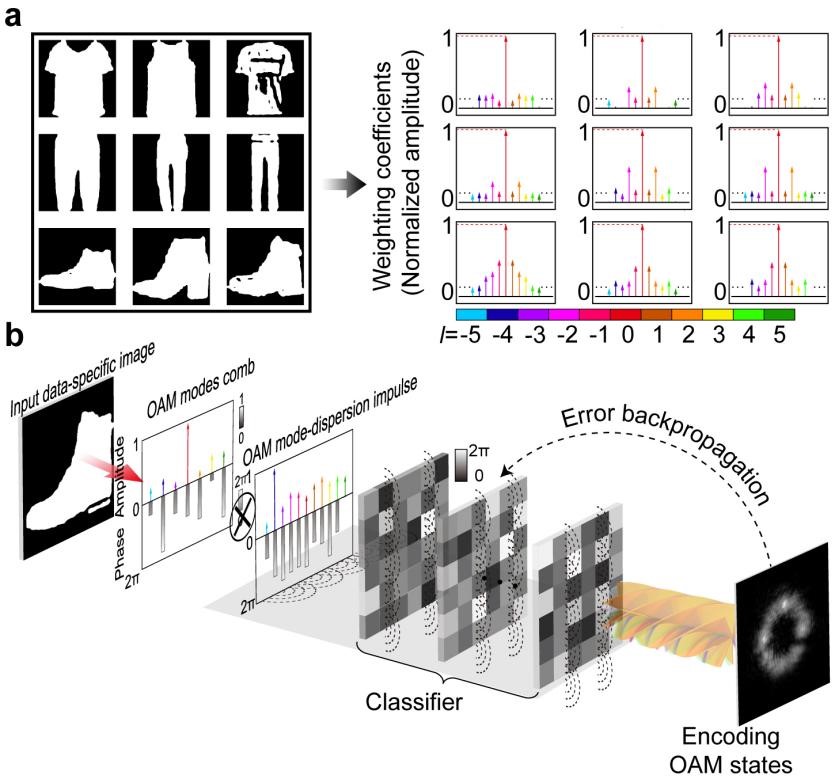Recently, USST project team led by Professor Gu Min, and Professor Fang Xinyuan published a paper titled “Orbital angular momentum-mediated machine learning for high-accuracy mode-feature encoding” in a top journal Light: Science & Applications. Professor Fang Xinyuan, Dr. Lia Baoli and Hu Xiaonan, a Ph.D student at IPC were the corresponding authors. USST was the first unit.
As a typical type of structured light field, Orbital angular momentum (OAM) beams have a spiral phase and a "donut"- shaped intensity distribution. Due to its theoretically orthogonal infinite physical state, OAM can be utilized as an information carrier to enhance information capacity and security in fields such as optical communication, holography, optical storage, display, image processing, and quantum information. During this process, although various decoding methods of all optical orbital angular momentum have been developed, the current pixel by pixel orbital angular momentum encoding technology still generates significant delays in information processing.
Therefore, the research group is committed to building a diffractive optical neural network, expanding the input information into an OAM spectrum, using the optical diffraction process to achieve OAM spectrum convolution and mode selection, and learning OAM features of the input information based on machine learning algorithms and achieving high-precision encoding. Combined with OAM decoder, this scheme has been applied to tasks such as all-optical encoded orbital angular momentum optical communication, end-to-end switchable image display, and all-optical dimensionality reduction anomaly detection, providing research insight into intelligent information processing of all-optical OAM.
This study utilizes a universal mechanism of all-optical machine learning to transform data features into OAM states, enabling free transformation of any information in the OAM dimension. By learning the new course of intelligent OAM encoding, optical machines have opened a new door to encoding specific databases and images at the speed of light, while also breaking the bottleneck of optical dimensionality reduction in the OAM domain. This technology is expected to explore the application of optical machine learning in high-capacity, high-security classical and quantum optics.

Related: https://doi.org/10.1038/s41377-024-01386-5
https://www.nature.com/articles/s41377-024-01386-5


